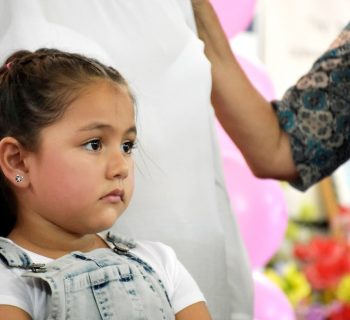By Editorial Board ~ NY Times ~ October 1, 2018
The administration created this crisis.
It doesn’t take a psychologist to understand that ripping children from their beds in the middle of the night, tearing them from anyone they’ve forged a connection with, and thrusting them into uncertainty could damage them.
Yet the crisis that has led federal immigration authorities to bus nearly 2,000 unaccompanied children (so far) from shelters around the country to a “tent city” in the desert town of Tornillo, Tex., is almost entirely of the American government’s own making.
The Trump administration has struggled for solutions as the 100 or so shelters that house minors who’ve crossed the border without parents have filled to capacity. More children stuck in immigration limbo for increasing periods of time have strained the system that manages such kids. (As The Times reported, officials feared that the children being taken to Texas — among 13,000 being detained nationwide — would run off if they were told ahead of time, or moved them during waking hours.)

How to best handle the cases of unaccompanied minors has perplexed authorities since the Obama administration. But the current crowding is not a result of some sharp increase in children stealing across the border — the influx is no greater now than it has been for the past two years.
Instead, the Trump administration’s own draconian policies are to blame. Around the same time that it began separating immigrant children from their parents as they crossed into the United States, the Department of Homeland Security also established strict requirements for the relatives and friends who might care for these children while their cases are sorted out. Prospective sponsors are now required to submit fingerprints, and to share their information with federal immigration officers. Because most of them are undocumented immigrants themselves, they have been scared off by these requirements. And with good cause: Dozens of applicants who took the chance of applying to be sponsors have been arrested on immigration charges. As would-be sponsors shrink away, more children are stranded in federal custody.
Images of young children who were taken from their parents this summer prompted a widespread public outcry, leading the Trump White House and immigration officials to reverse course. The long-lasting trauma of extended detention, however, is harder to capture on film. Proponents of the current system insist that the restrictions on sponsors were put into place for the children’s protection. But it’s hard to see how any of the new policies could possibly do more good than harm.
Staff members at shelters cried as the children were removed, they told The Times, out of dread for what the children would now face. The tent city in Texas is not being held to any of the rules that group homes or foster care facilities are subject to. And those existing safeguards had already proved inadequate protection against physical abuse, sexual assault and emotional torment. The Department of Health and Human Services has instead offered a thin set of guidelines, but while the tents are air-conditioned, children will not have regular access to schooling or legal services.
Given that dozens of prospective sponsors have already been arrested, and that a vast majority have committed no other crimes, it seems that the true purpose of the new sponsor requirements is to find and deport as many undocumented immigrants as possible.
Meanwhile, thousands of children languish. They’d be in the homes of friends and relatives if the administration ended the crackdown. These arrangements can also be imperfect, but in most cases, they are far better than an indefinite stay in desert tents at taxpayers’ expense.
Long-term solutions to America’s immigration challenges will come only with political compromise and a comprehensive reordering of official policies. But further traumatizing children whose lives have already been upended, and detaining them indefinitely, serves only to deepen the shame of this country’s treatment of vulnerable brown-skinned children, many of whom will spend a lifetime recovering from our failures.
Source: Editorial Board ~ NY Times






